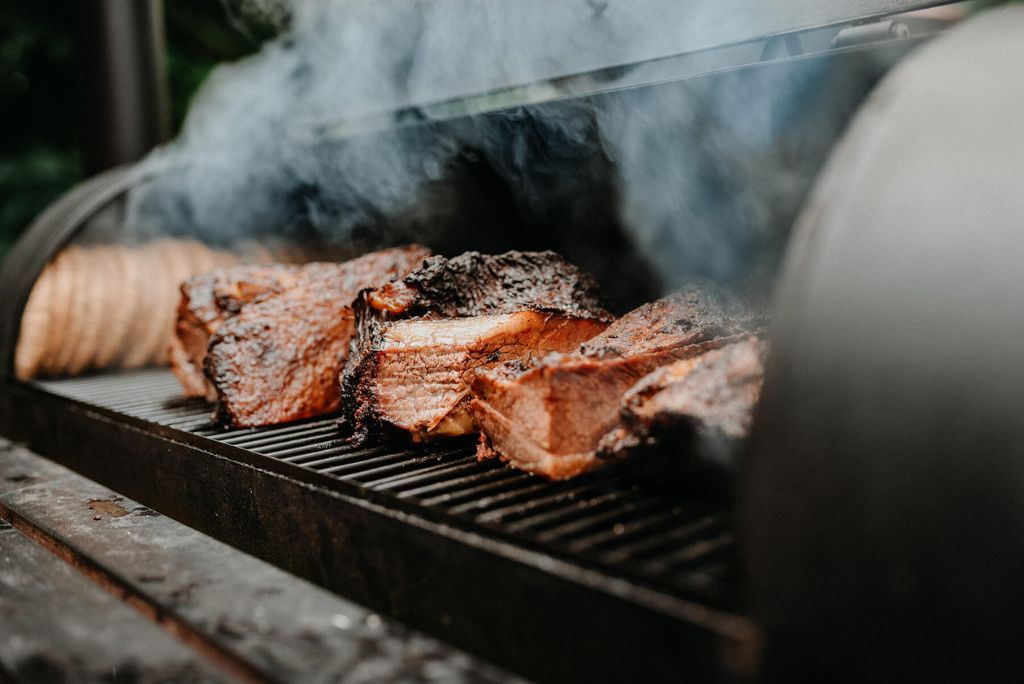We have been enjoying meat ever since humans learned how to hunt. But, in the absence of refrigeration, our age-old ancestors needed to preserve their meat safely and without compromising the quality of its nutrients, especially in long and cold winters, or where hunting seasons were not so successful.
Smoking meat was the method of choice, probably discovered by accident while palaeolithic tribes gathered around the fire with meat hanging on a nearby tree. The smoke not only enhanced the flavour, but it prevented spoilage, thus extending the shelf-life of their meat, which ensured a steady food supply during harsh winters or when migrating.
Fast forward a few thousand years and we still enjoy a smoked slab of meat, despite not needing to use it for preservation reasons, although it still helps.
The evolution of smokehouses
While the basic principles of smoking remain unchanged, modern technology has streamlined the process with more sophistication. Advancements in technology have introduced electric smokers, pellet grills, and even smoker attachments for regular grills. These innovations simplify the smoking process, making it accessible to home cooks.
Some companies have constructed dedicated smokehouses – small buildings designed to control the temperature and smoke flow, allowing them to provide smoked meat on an industrial scale. Different cultures developed their own variations, from the pit-style smokers of Native Americans to the elaborate smoke chambers used in Europe and each culture focuses on a particular meat and dish, offering a variety of flavours to choose from.
North America: In the United States, the Southern barbecue tradition is iconic, with smoked ribs, brisket, and pulled meat being crowd favourites.
Europe: Countries like Germany and Poland are known for their smoked sausages, which are often enjoyed in hearty dishes.
Asia: In China, tea-smoking is a popular technique, especially for duck meat. Meanwhile, in Japan, smoked fish is often featured in traditional breakfasts.
Middle East: Smoking is also prevalent in Middle Eastern cuisine, where methods like smoking lamb over aromatic woods are commonly enjoyed.
Benefits Beyond Preservation
Smoking offers more than just extended shelf life. The slow cooking process associated with smoking tenderises meat, resulting in a juicy and flavorful product. Additionally, smoke contains natural antioxidants that can help preserve nutrients in the meat, ensuring that you get the most nutritional value from your food. This is especially important if you are buying high-quality organic meat.
____________________________________________________________________________
Must read: Heat And Meat: How Cooking Temperature Impacts Nutrition
____________________________________________________________________________
The magic of wood for fire and flavour
The type of wood used for smoking plays a crucial role in the final flavour profile. Hickory imparts a strong, savoury taste, while oak lends a more subtle smokiness. Fruitier woods like apple or cherry add a touch of sweetness, perfect for lighter meats like fish or poultry. Experimenting with different wood combinations allows pitmasters to create unique signature flavours.
This blogpost wouldn’t be complete without clear instructions on how to smoke your own meat and we have chosen a beef brisket recipe to set you off in the right direction.
Recipe for Smoked Beef Brisket
Ingredients
Instructions:
- Prepare the Brisket: Trim excess fat from the brisket, leaving about 1/4 inch for flavour.
- Season the Brisket: Mix salt, pepper, paprika, garlic powder, and onion powder. Rub this mixture generously all over the brisket.
- Preheat the Smoker: Set your smoker to 225°F (107°C) and add your choice of wood chips.
- Smoke the Brisket: Place the brisket on the smoker, fat side up. Smoke for about 1.5 hours per pound, spritzing with apple juice every hour.
- Monitor Temperature: Once the internal temperature reaches 165°F (74°C), wrap the brisket in butcher paper and continue smoking until it reaches 203°F (95°C).
- Rest and Serve: Allow the brisket to rest for at least an hour before slicing. Serve with your favourite sides and enjoy!
Final Thoughts
If there is one type of smoking that is good for you, it is this.
Smoking meat is a culinary tradition steeped in history and innovation. From its humble beginnings as a preservation technique to its modern role in creating delicious and versatile dishes, smoked meats continue to capture our palates and imaginations. Whether you're a seasoned pitmaster or a beginner, there's always something new to learn and savour. So fire up your smoker, explore the world of wood flavours, and create your own smoky masterpiece!
If you're looking for premium organic halal meat, explore our selections and get inspired. Happy smoking and don’t forget to share your smoked meat creations with us!

